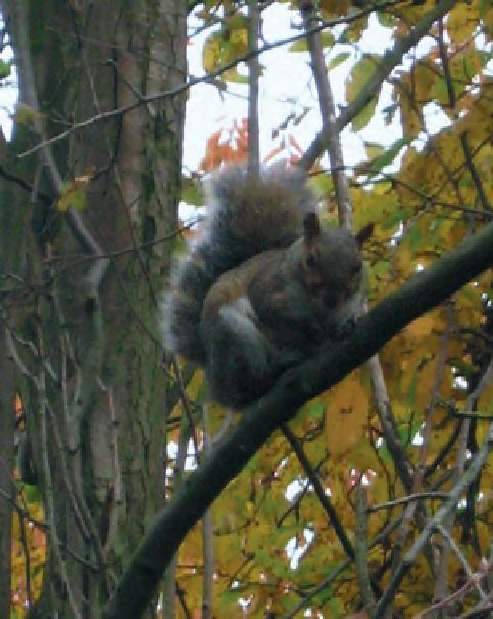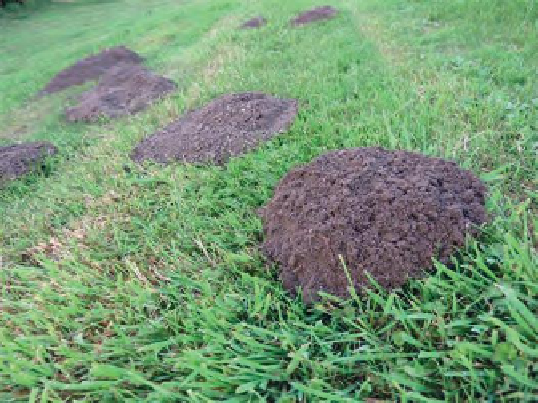Agriculture Reference
In-Depth Information
platforms (dreys) high up in trees. The female may
become pregnant at an early age (six months). As
the squirrels have few natural enemies, and they live
high above ground, control is difficult in most areas. In
some northern parts of Britain and Ireland, however,
pine martens (a tree-inhabiting relative of the weasel)
are important predators of grey (and red) squirrels.
Control
. During the months of April to July, when
most damage is seen,
cage traps
containing desirable
food (e.g. maize seed), reduce the squirrel population
to less damaging levels. Spring traps placed in natural
or artificial tunnels achieve rapid results at this time of
year if placed where the squirrel is commonly found.
It is suggested that the caged squirrel is enticed
from the trap into a strong sack and killed with a
blunt instrument. It should be noted that releasing
captured squirrels back into the wild is illegal.
Ultrasonic deterrent
devices are claimed to have a
repelling action against squirrels up to a distance of
30 m.
Netting
may be placed over frames covering
sensitive crops such as raspberries and strawberries
to reduce the squirrel's foraging. The use of anti-
coagulant poisons such as
warfarin
is
not
permitted
for gardeners. Trained operators need to be employed
to carry out this procedure.
Figure 18.3
Grey squirrel
many tree species stripped off (
ring-barking
). In
summer, pears, plums, raspberries and peas may
suffer. Autumn provides an alternative food source in
the form of wild plant seeds, but apples and potatoes
may be damaged at this time. In winter, little damage
is done. Gardens and horticultural units located near
wooded areas can be badly damaged by this agile and
inventive pest.
Life cycle
. Squirrels most commonly produce two
litters of three young from March to June, in twig
The mole (
Talpa europea
)
The mole is found in all parts of mainland Britain but is
not present in Ireland.
Damage
. This dark grey, 15 cm long mammal
(Figure 18.4), weighing only about 90 g, uses its
shovel-shaped feet to create an underground system
5-20 cm deep and up to 0.25 ha in extent. The tunnel
contents are excavated into mole hills. The resulting
root disturbance to turf and crops causes wilting, and
18
(a)
(b)
Figure 18.4
(a) Mole (source: Wikimedia Commons); (b) mole hills in grassland





